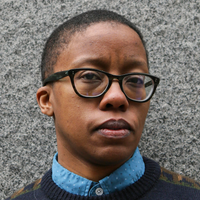On finding power in the everyday
Prelude
Vibha Galhotra is a New Delhi-based conceptual artist, working in a variety of media, including sculpture, photography, printmaking, video, drawing, and text. Her work is influenced by nature, climate change, and the anthropogenic issues of our age. Her large-scale sculptural works address the shifting topography of the world under the impact of globalization and growth, located as part of the restructuring of culture, society and geography—of New Delhi, and the world. Galhotra is a fellow of Jerusalem international fellow program 2020. She was awarded with Asia arts future award in 2019, the Asian Cultural Council Fellow in the USA in 2017, and also received a Rockefeller Grant in 2016. Galhotra was born in Chandigarh, India where she spent her formative years studying in the modernist spaces designed by Le Corbusier.
Conversation
On finding power in the everyday
Visual artist Vibha Galhotra discusses working with communities, the beauty of negotiation, why concepts are more important than the materials used to realize them, and giving yourself space to breathe.
As told to Ken Tan, 2278 words.
Tags: Art, Education, Process, Multi-tasking, Collaboration, Inspiration.
Your creative roots began in Chandigarh, in the Government College of Art, a space that Le Corbusier designed. What was it like being immersed daily in his modernist designs?
It was inspiring to have lived and studied in Chandigarh, especially with access to the adjoining Government Museum and Art gallery. My college building architecture has this magical play of light and shadows. There were many windows so you could observe the passing sunlight change throughout the day. I sometimes would sit in a corner and enjoy the play of light and shadows, basking in the vision Le Corbusier created with these monumental structures.
Architecture is a great way to start because it really gives you the synthesis of design, of space, of control and light.
I used to think of my work as creating spaces within the space. Perhaps, that’s what inspired me from Le Corbusier’s architecture. His work has this very specific tension between nature and architecture, whilst being in harmony. Looking back I realize the use of urban materials in my work: concrete, wood, metal must have come from the influences I had by the monumental architectures in Chandigarh.
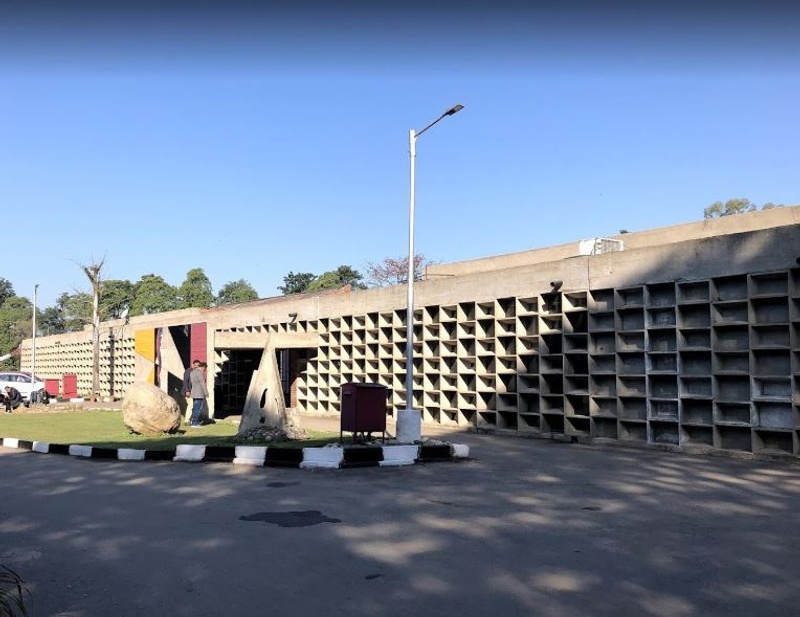
Your artistic practice is multidisciplinary, how do you choose one discipline over another?
The choice is often spontaneous. Mediums are the tools to express my ideas. Every idea and work demands its own flow and own material. So the challenge is not in shifting from one discipline to another, but what I can do to fully express what I want. Unless I’m working with my hands, to have that sense of molding materials into something, I don’t feel comfortable.
A means to an end.
Yes! The core concept is more important than the material. And the best case scenario is where they compliment each other. My process first begins with concepts. I think of many things, usually ideas I picked up from my readings and research. Then I look for the best form to tell the story. The material/medium occurs to me in the process.
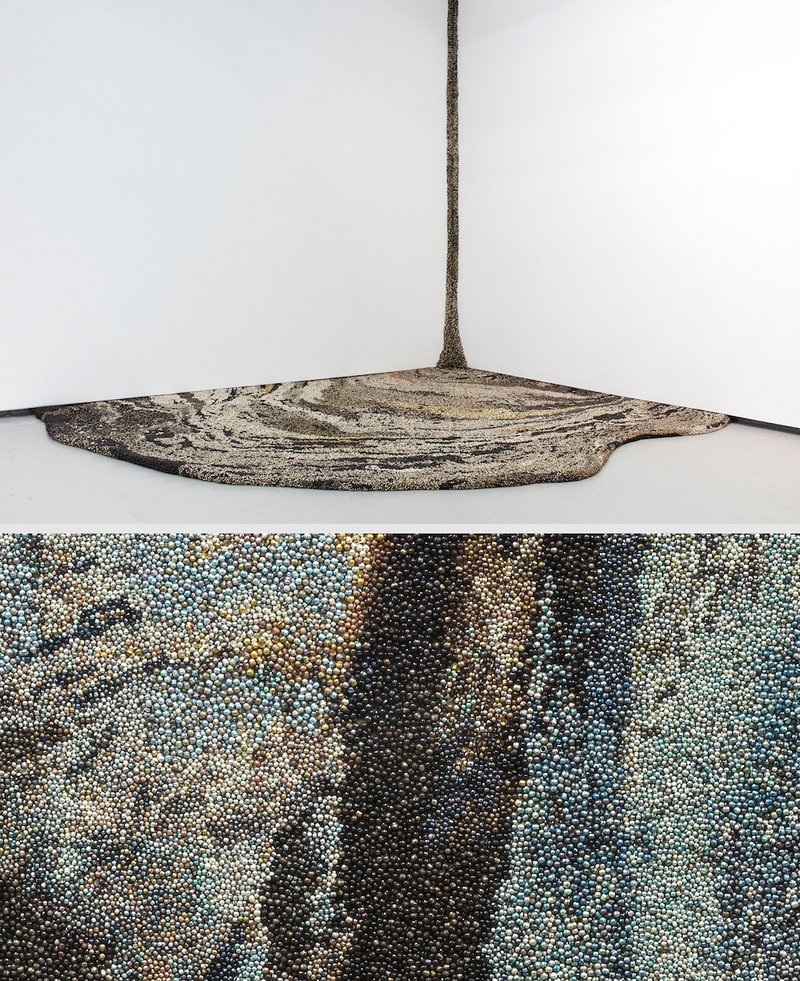
Flow, Nickel Coated Ghungroos, Fabric, PU ‚129 x 93 x 112 in. Detail of ghungroos. Image courtesy of the artist.
How did you start showing in the US?
I finished college in 2001 and moved to Delhi in 2005. There were very little opportunities for Indian artists at the time. I started showing in a few galleries in India and was able to do a few residencies and a sculpture symposium in Europe. About exhibiting in the US, it was the late partner at Jack Shainman Gallery, Claude Simard, who first saw and got interested in my work flipping through a catalogue of a group show at Gallery Espace (a Delhi-based gallery). He visited my studio and offered me to be part of the gallery representation. Gallery Jack shainman started showing my work from 2011 onwards. That was the start of regular exhibitions in the US.
I never thought about galleries, let alone exhibiting in the U.S. Like I said, there were little opportunities in India, in the early 2000’s. Even if there were, they were for senior artists who were invited directly by the Embassies or other organizations. The Internet was a very new thing, not that we had access to computers. With the very limited art books coming to India, it was impossible to know about the international scene, unless you actually travelled.
I travelled to Europe for sculpture symposiums and artist residencies. In early days, I was inspired by the Land Artists—Christo and Jeanne-Claude, Robert Smithson, Ana Mendieta, Dennis Oppenheim and artist such as Louis Bourgeois, Mrinalini Mukherjee, Nalini Malani, Magdalena Abakanowicz, Anslem Kiefer and many more. I was, and still am, very much interested to explore the possibilities of working within the landscape and the public domain. But Land Art was not recognized in India then and no funding or patrons were available for the same and it was difficult for me at that point to manage these projects on my own.
You were one of the pioneers for Land Art in India, with works such as Who Owns The Earth? and Black Cloud Project. How do you seek out certain sites or situations to react to?
Those are actually later works, but earlier I had done few works in that direction. I like to travel, a lot. I think I was born a gypsy. The travel bug came from my father who used to take us to new places to interact with the local communities. Because of him, I have always been friendly with people. I am interested to know what is going on in their lives and what’s the pulse of the moment. But, also to stand back and observe, to see with an objective eye, what really is going on. It’s really interesting how the truth surfaces when you dedicate time to engage with people of diverse communities. I decided to focus on community-based work in the context of their environment. When you go into the community, you are faced with unpredictable challenges. That’s a deep-dive into human behavior: how behavior is impacted by the changing structures, policies, or economies.
That change is inevitable.
The key question I ask in my work is: “Where are we going?” It isn’t about the future, but the present that we are dealing with, so what kind of future will we face collectively as communities? In a way I’m interested in narrating the story of our times. I am part of this world and how can I present all its different stories? And the best thing is, you get to show the created work back to these communities, so that is the exciting part of the story.
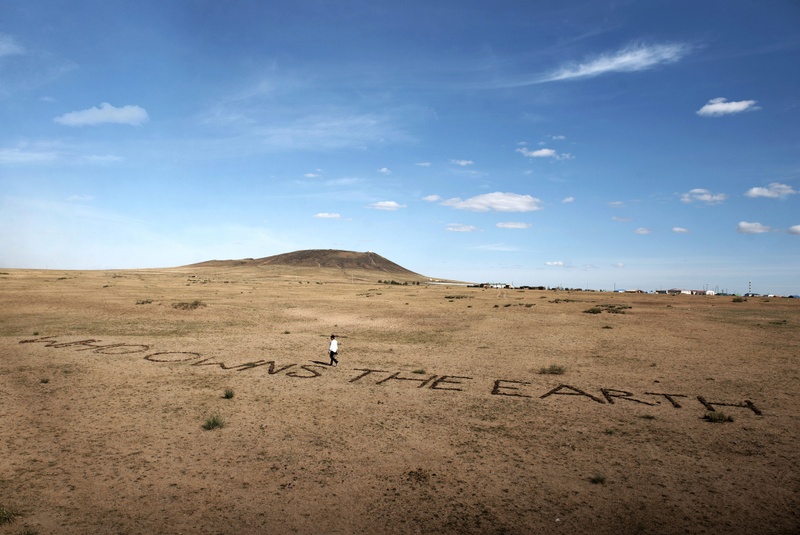
Who Owns The Earth? Installation Mixed Media, 3m x 30m, 4th Land Art Biennial LAM, 360° Mongolia, 2016. Image courtesy of the artist.
What was the reaction from these communities?
Naturally, mixed. Some understand its relevance and some don’t. But I think in the process, I always hope to instill some change in people. For Example: the Black Cloud Project, which I did with a kite-flying club. I had to convince them in three meetings. They were like “Is this a joke? No, no, it’s not possible here. We are serious kite flyers, what are you?” I was talked down when I introduced myself as an artist, and being a woman made it more difficult since these spaces were dominated by men. After spending more time with them they agreed to try it out. It was a pilot for me to understand the technical aspect of creating a cloud formation with kites in the sky, to check the wind speed, distance, kites shapes, etc. We finally achieved this with the participation of its club members.
How did you convince them?
A practical suggestion came from the head of the club. He said, “Why don’t you offer some tea and snacks? So they will come and listen to you talking.” It was a conversation starter for me, and once you get them to the table, it becomes easier. After a point, we were kite-flying friends, and me being an outsider and woman did not matter anymore.
I learnt different communities require different negotiating skills. There is no one model or template to reproduce. What works in India will not necessarily work elsewhere. Negotiation is a beautiful process as it creates this magic of conversation where both sides exchange reciprocally. The communities learn about art, how one can express even through something seemingly mundane as kite flying. The everyday can be a powerful vehicle in spreading a message.
The ups and downs, the adjustments you make to your original plans. And just being receptive to change and reacting on the spot. All that becomes part of the work.
Absolutely. How are you going to react to change otherwise? Probably your producer onsite will be calling you in your studio like, “Hey, they’re not cooperating, what do we do?” You have to be there to deal with the situation and manifest your vision into something meaningful. Those very people involved become part of the work: its community-made work, that extends beyond me.
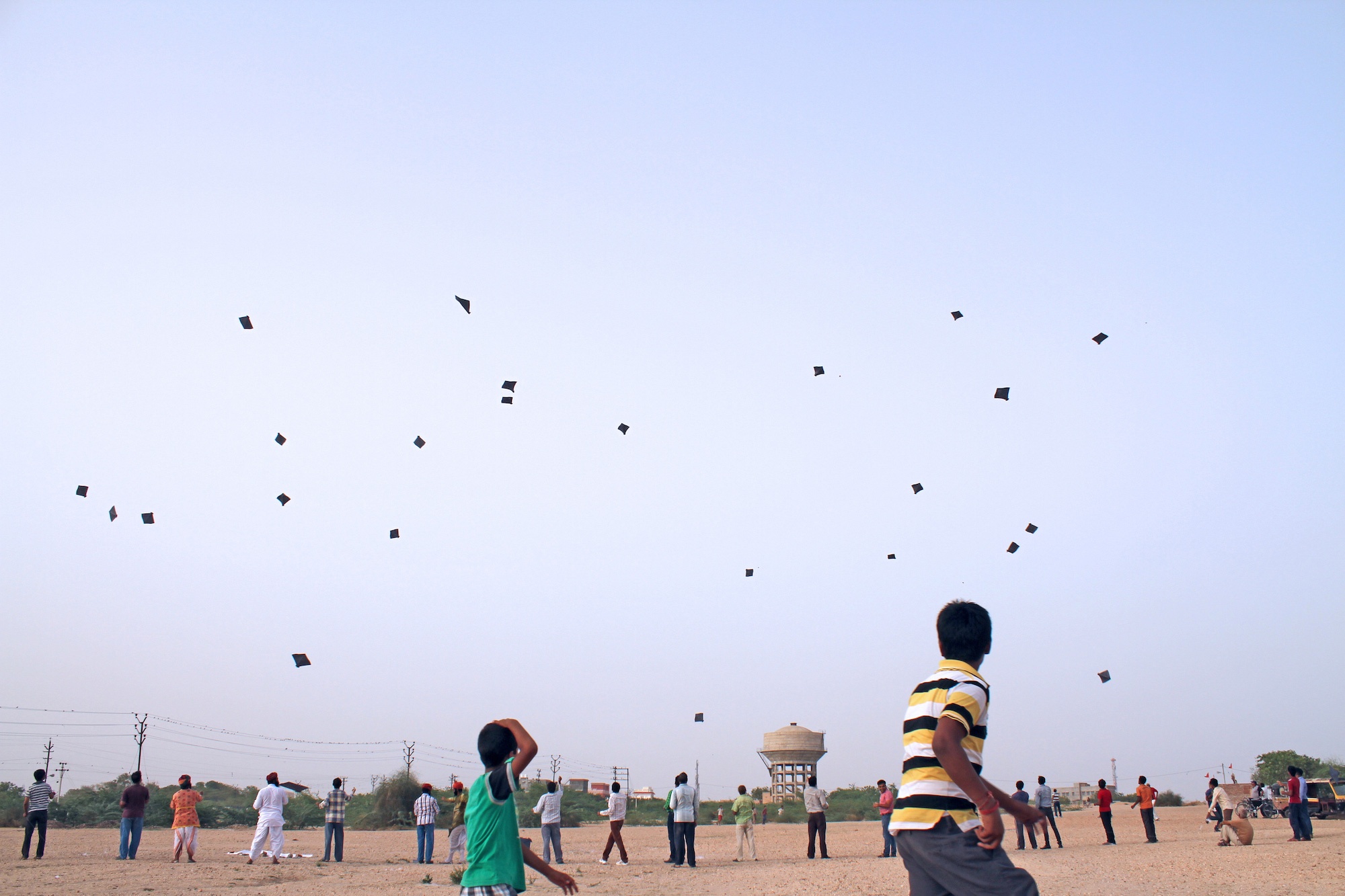
The Black Cloud Project, Pubic participatory project, 2015. Image courtesy of the artist.
How do you use your studio time?
In the studio I get to play with materials and experiment on processes. I read a lot, listen to music, chat with friends. I love my studio; it is both a quiet “me” space, and social square to collaborate. I have a team of 10 women who have been working with me for the past 11 years in the workshop area of the studio. They help sew my large Ghungroo works. But each evening I have to get out in nature, or meet people. I’m a social person.
Are they craftspeople?
They are actually women from the urban village around my studio. I asked my landlady if she knew anyone who could help with sewing. She brought a couple of housewives, but soon I had 16 housewives in my studio. They kept returning because they wanted to interact with others and to make something creative. When I insisted on formally paying them for their regular hours, some shied away and some stayed.
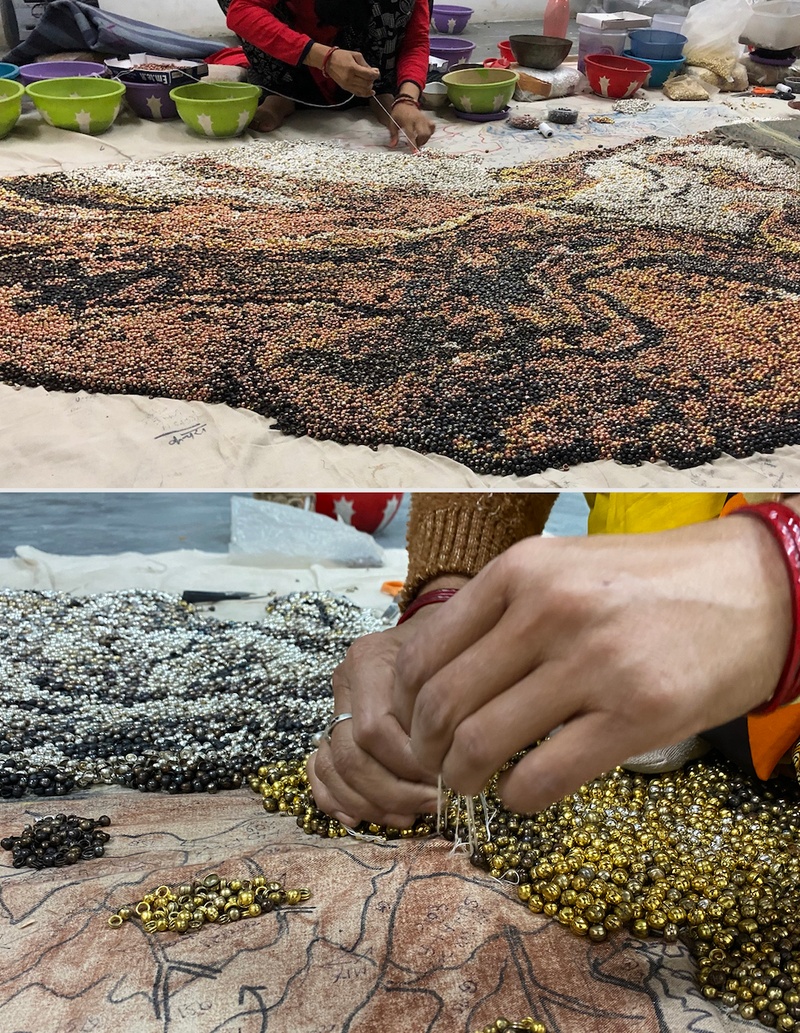
Image courtesy of the artist.
What is the focus of your work?
The subject of my work is on the Anthropogenic issues of our age, climate change, the relationship between humans and Nature and how they are woven into the socio-political and economical fabric of present. There is an unequal distribution of wealth and resources. I observe from my position in the middle of the theatre of the absurd to tell the story of my time.
2006 was a period of economic boom in India, suddenly everything changed. The government aspired to turn third-world Delhi into a first-world Shanghai, so you can imagine the desire to build, to modernize, to gentrify. The growth was so fast that people and nature found it difficult to match the pace of it. Biodiversity was harmed as a result and we turned our backs towards all our natural resources in the name of growth. The country’s GDP growth was/is at rise but there are communities who could not even afford a bottle of water. There are still communities with no available water in households, but a single tap shared by everybody in the community area. There are women who go far from home to fetch water and carry back 50 liters of water on their head. More than half of their life goes into fetching water. But on the contrary there are people going for spas, pool baths, water parks, water theme parties and so on. Absurd, isn’t it?
Because I breathe the same air, drink the same water; I am interested in the story of change, and all the associated urban issues that are imposed on us. Not just the pollution of the air and water, we are essentially changing our habitat fundamentally. We have lost many things in the name of development.
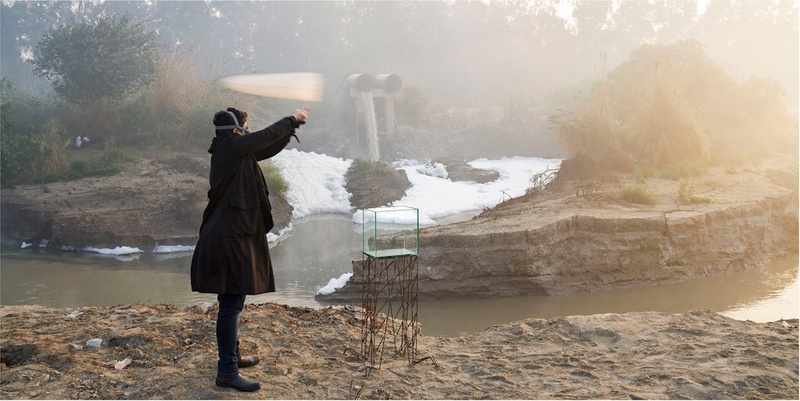
Breath by Breath, 18 x 36 digital print on paper, 2017. Image courtesy of the artist.
What do you think the role of an artist such as yourself is?
It is important for me to pose a question rather than give answers. I’m not in a position to solve social or environmental issues on my own. Being an artist, my power is in telling the stories of our time, and in pointing out the elephant in the room. For instance: Now the policy makers have this idea of changing the course of the rivers to link them up. Do they know they will alter the entire biodiversity? Many inconvenient questions are avoided and it is for the artists to raise these questions in the public sphere. The change as we need is only possible when we collectively work towards it.
How do you prevent a burn out? Especially today (in early 2021 still in the midst of the COVID-19 pandemic), everything is so uncertain and we have to shelter at home.
The COVID lockdown has given me a chance to pause and take a breath. It is a vital exercise to look back and reflect. Give yourself that breathing space. We artists tend to burn out, and go through creatively challenged phases without even realizing them. That is part of the process and we should accept it with a smile. Another way is to do different things other than the work, like spend time with family. India is full of festivities as you know, which gives me a good excuse to distract myself.
Vibha Galhotra Recommends:
Reading - Silent Spring by Rachel Carson
Audio book - 21 Lessons for the 21st Century by Yuval Noah Harari
Netflix series (addiction) - Versailles
Collecting debris as remains of memories became an obsession, from demolished buildings in the dream of a utopian modern housing (third world problem)
Twitter is essential to follow up the long farmer protest in India at present.
- Name
- Vibha Galhotra
- Vocation
- Visual artist
Some Things
Pagination
